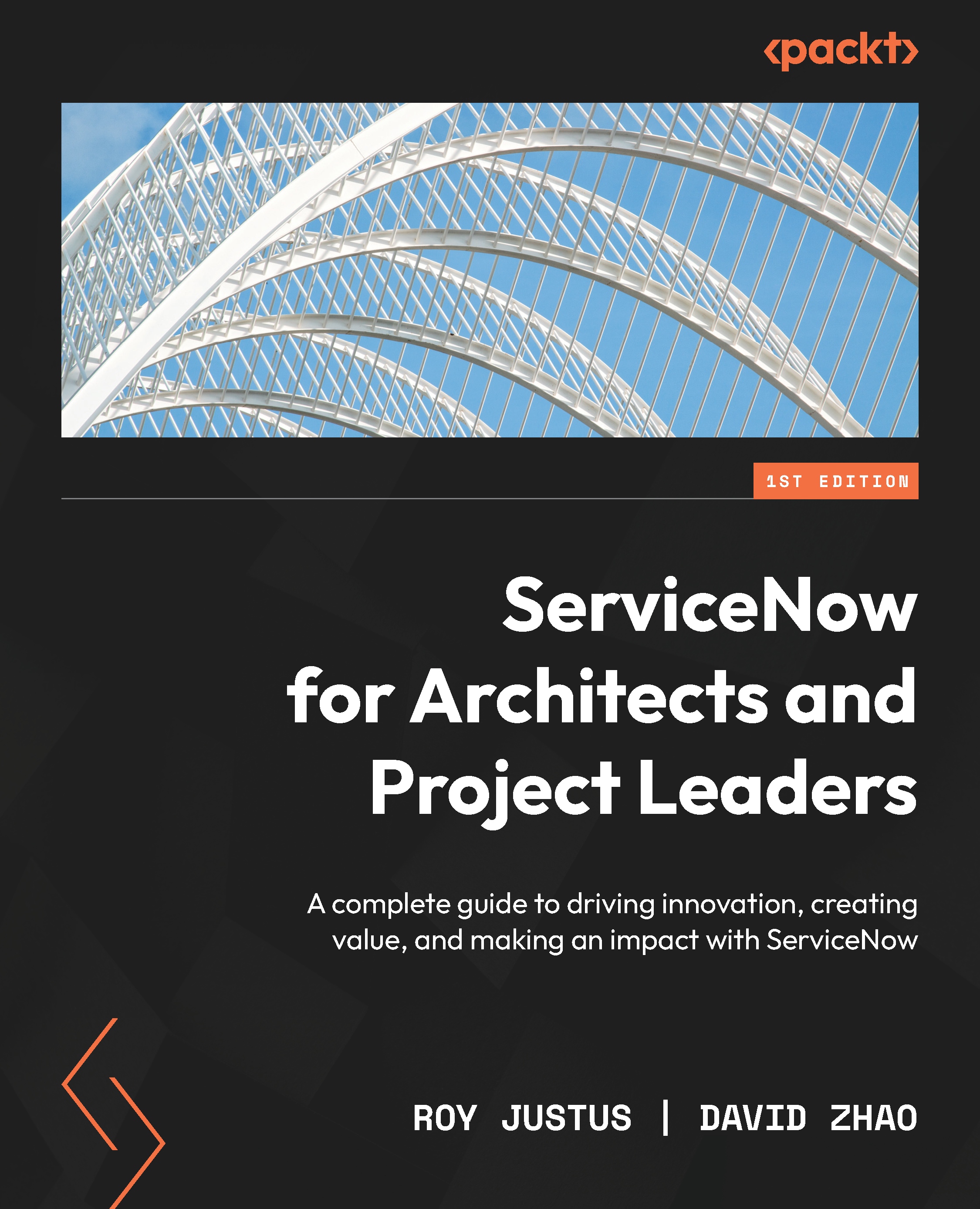Overview of this book
ServiceNow is the leading enterprise service management platform that enables the effective management of services in a modern enterprise.
In this book, you’ll learn how to avoid pitfalls that can challenge value realization, where to focus, how to balance tradeoffs, and how to get buy-in for complex decisions. You’ll understand the key drivers of value in ServiceNow implementation and how to structure your program for successful delivery. Moving ahead, you’ll get practical guidance on the methods and considerations in securely using ServiceNow. You’ll also learn how to set up a multi-instance environment including best practices, patterns and alternatives in the use and maintenance of a multi-instance pipeline. Later chapters cover methods and approaches to design processes that deliver optimal ROI. Further, you’ll receive tips for designing technical standards, designing for scale, ensuring maintainability, and building a supportable instance. Finally, you’ll focus on the innovative possibilities that can be unlocked in a ServiceNow journey which will help you to manage uncertainty and claim the value of being an early adopter.
By the end of this book, you’ll be prepared to lead or support a ServiceNow implementation with confidence that you’re bringing not only a solution but also making an impact in your organization.



 Free Chapter
Free Chapter
